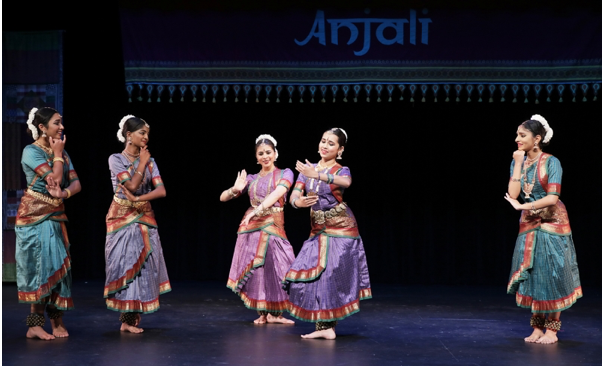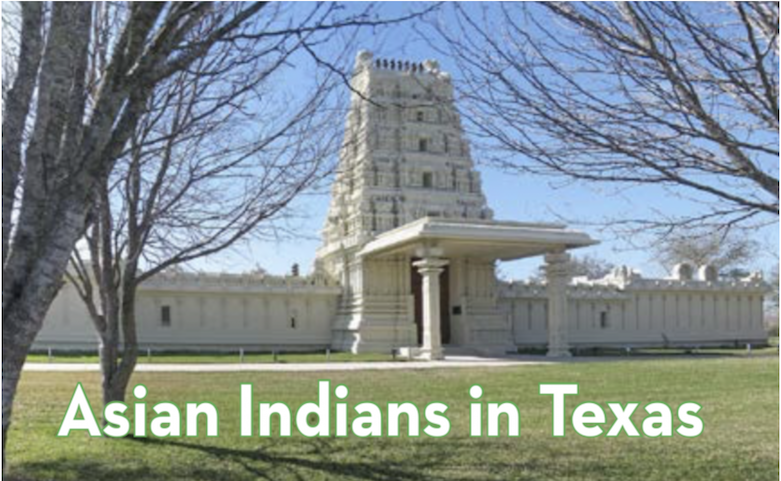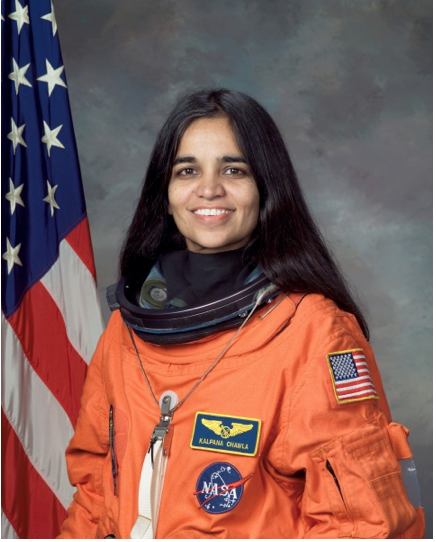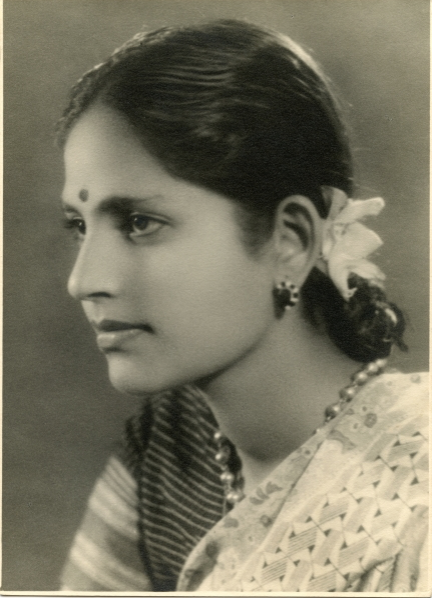This article was first published in the Texas Almanac 2020–2021.
The Indian Texan community is incredibly diverse, with the Indian continent representing more than 600 languages alongside a myriad of religious and cultural practices. Since the early 1900s, Asian Indian Americans have helped shape the state’s economy, public policy, and cultural landscape through their work in education, public health, high technology, medicine, and local business entrepreneurship.
Early Immigration Patterns
Immigration from the Indian subcontinent to the United States prior to 1965 was limited due to a series of racist immigration laws targeted at Asian populations. The Immigration Act of 1917, also known as the Asiatic Barred Zone Act, prohibited immigration from the Asia-Pacific Zone, which included the Indian subcontinent. Asian Indians were targeted specifically in rulings such as the 1923 United States v. Bhagat Singh Thind decision, which decided Asian Indian immigrants such as Bhagat Singh Thind were ineligible for naturalized citizenship.
The 1946 Luce-Celler Act reversed this decision, which allowed 100 Filipinos and 100 Asian Indians into the United States per year. Filipino and Indian Americans were also eligible for naturalization and citizenship under this provision. The Immigration and Nationality Act of 1952 abolished previous racial restrictions outlined in the Immigration Act of 1917, while also providing a quota system for nationalities and regions. Under this new policy, immigration from the “Asiatic barred zone” was capped at 2,000 people annually.
Yet despite these laws, Asian Indians still managed to settle in Texas in the early 1900s. These immigrants were most likely Punjabi Sikhs seeking agricultural work who traveled through Latin America to Texas. By 1930, 49 Indians lived in Texas, many of them attending universities in Dallas, Houston, Lubbock, and College Station. While miscegenation laws that were in place until 1970 prohibited early Asian immigrants from marrying white Texans, many still married Mexican or African American women.
The 1965 Immigration Act led to a swell of Indian immigration to Texas and the rest of the country. The policy removed the quota system based on country of origin. Professionals and others with specialized skills were given priority under this immigration act, resulting in Indians adept in high technology, engineering, energy, manufacturing, and medical fields clustering in major Texas cities. While immigrants prior to 1965 were predominantly male, this policy allowed for an influx of Indian women to the state. Furthermore, the Vietnam War resulted in a severe shortage of nurses in the 1970s. Nurses were recruited from both India and the Philippines to offset this shortage, part of a federal initiative that provided financial and citizenship incentives to relocate to the United States.
The 1990 H1-B Visa program permitted Asian immigration for work in the United States for up to six years. Texas companies were able to recruit highly educated workers from overseas when there was a shortage of skilled Americans. This visa program caused the Indian Texan population to double in the 1990s, with skilled Indians flocking to the state for professional and educational opportunity.
The Indian Community of DFW
The Dallas-Fort Worth area is home to one of the oldest Indian American communities in Texas. The city served as a cultural hub for visiting Indian philosophers, lecturers, dancers, and other performers. These visitors came to academic institutions such as Southern Methodist University (SMU) and the University of Texas at Dallas (UT-Dallas). Some of the earliest community members in Dallas included Iqbal “Ike” Singh, who moved to Dallas in 1956 to attend the Graduate School of Business at SMU. Over time he became known as the “patriarch of the Indian community” in Dallas. He welcomed and assisted Indian families new to the area and founded community organizations such as the Indian Association of North Texas and the Punjabi Cultural Association of North Texas. He was a longtime restaurateur and owned the Safari, La Tunisia, and Commerce Club establishments.
Kumar Pallana was another early Dallas resident. This Indian plate spinner and entertainer was active in the United States vaudeville circuit as “Kumar of India.” In the 1960s he settled in Dallas, where he introduced yoga to locals through one of the state’s first yoga centers. He and his family also ran the Cosmic Cup Café, which led to Pallana’s introduction to ilmmaker Wes Anderson. This relationship led to the Indian American appearing in films such as Bottle Rocket, The Royal Tenenbaums, and The Terminal.
Many early Indian entrepreneurs across the state operated motels, often owned by Indians with the surname “Patel,” part of the Gujarati Hindu subcaste. By 1984, nearly 14% of all nonchain motels in Texas were owned by families surnamed Patel. Motel ownership in the 1980s helped young Indian families meet requirements for permanent residence status, and these buildings were often operated by leveraging large familial networks. While many families initially began working low-cost independent motels in less desirable areas, many soon branched out to operate much larger commercial chains such as Ramada and Holiday Inn. By 1994, families named Patel owned about 80% of the 90 small motels in Dallas.
From 2000 to 2010 the Asian Indian community of Dallas-Fort Worth more than doubled, with 106,964 Asian Indians residing in Collin, Dallas, Denton, Rockwall, and Tarrant counties. The India Association of North Texas, originally founded in 1962, continues to host a variety of cultural celebrations, social events, and community service projects, which keeps the Indian community base strong and thriving. New immigrants are attracted to the city’s job market, strong school system, and proximity to Indian places of worship, groceries, and other local businesses. In 2012 there were 90 Indian restaurants within a 40-mile radius of Dallas.
The Indian Community of Houston
Houston is home to one of the largest Asian Indian communities in the state. From 1950 to 1965, Houston was the temporary home for a small number of Indians coming to the city to work for a few years before returning to their home country. The oil boom of the 1970s brought thousands of Indians to Houston, with companies such as Humble Oil and Shell Oil attracting Indian engineers and researchers. Texas Medical Center and NASA’s Johnson Space Center were also prominent places of employment for Indian immigrants. In these earlier days, the University of Houston’s India Student Association served as the center for the Houston Indian community. The association provided support for Indians who had recently relocated due to work, education, or seeking refugee assistance.
Despite the recession of the 1980s and exodus of many Asian Americans from Houston, the Indian American community continued to grow. Today, the influence of the Indian American community can certainly be felt throughout Houston. The community has organized expansive fundraising efforts, such as the campaign supporting the 2001 Gujarat earthquake relief efforts. The city mourned the passing of Kalpana Chawla, the first American of South Asian descent to travel in space and victim in the 2003 Columbia shuttle disaster. Chawla earned her Master’s degree in aerospace engineering and conducted her astronaut training in Houston in 1994. In 2004, the Asian Advisory Committee was created within the Houston Independent School District to address the growing Asian American student population. The committee has worked to provide translation services for parents, advocate for more diverse curriculum development, and implement Asian cultural celebrations within the classroom.
Other Texan Hubs
Austin
As of 2016, Asian Indians are the fastest-growing Asian ethnic subgroup in the city, comprising roughly 33% of Austin’s Asian population. While the city of Austin was home to very few early Indian pioneers, the University of Texas at Austin (UT-Austin) has been a campus known for its active Indian community. Early Indian Americans in Austin included Dr. Shanti Seth and Dr. Jagdishkumar Aggarwal, who both worked at UT-Austin and married each other in the city in 1965. Dr. Shanti Aggarwal came to the United States on an International Peace Scholarship, and her husband became the first non-European professor in the Engineering department. Other early UT-Austin faculty included Sockalingam “Sam” Kannappan, a Tamil graduate student at UT-Austin from 1968-1970, Indian philosopher Raja Rao, and Dr. E.C.G. Sudarshan, who was nominated for the Nobel Prize for his work in particle physics.
Outside of the fields of science, medicine, and technology, UT-Austin’s Indian student population engaged in social justice activism and community advocacy. Trikone-Tejas was formed at UT-Austin in 1996 as a progressive coalition of queer students, faculty, and staff of pan-Asian heritage. The organization was committed to ending sexism and homophobia through book and film discussions, workshops, and confidential support groups. Many Indian students were involved with the Asian American Relations Group (ARG!) and the Anti-Racist Organizing Committee in the late 1990s. Through years of protest and student organization, these two organizations fought for the creation of an Asian American Studies program at the university. UT-Austin graduate Raul Mahajan was recognized in Austin for his antiwar activism and won the 2002 Green Party’s nomination for Texas governor. Mahajan was the first Asian to ever make the ballot for that office.
Austin was also the birthplace of Saheli, a grassroots community organization that provided assistance to South Asian and other immigrant families dealing with issues related to domestic violence, sexual assault, and trafficking. The organization was started in 1992 and was the first community organization of its kind in the Southwest. A network of South Asian women worked to establish a confidential hotline, host educational discussions and family trainings, provide resources for immigrants, and demonstrate solidarity for broader antiviolence, antiracist work. The nonprofit has evolved from a small grassroots network into a pan-Asian organization now known as Asian Family Support Services of Austin (www.AFSSAustin.org).
Midland-Odessa
The Indian community of Midland-Odessa developed over time due to the fiercely competitive job markets in Dallas and Houston. Midland-Odessa became a center for petrochemical production and distribution, attracting many Indian professionals from medical and related fields. A home was purchased in 1987 to be used as a gathering space for Hindu Indians of Midland-Odessa. By the year 2000, 532 Indian families lived in the area.
Religion
The majority of the Indian Texan community practices the Hindu faith. When there were no temples built in Texas, the Hindu Worship Society of Houston provided Indians the opportunity to practice their faith at services held in family homes. The Society was finally able to establish the first Hindu temple in 1975. Sri Meenakshi Davasthanam was constructed in Pearland in 1982 as the third traditional Hindu temple in the United States. Built for the goddess Meeankshi, the temple now occupies close to 20 acres of land and serves more than 5,000 Indian Houstonians. Houston community member Raj Sayal organized the Hindus of Greater Houston in 1990, which united all local Hindu organizations to participate in celebratory festivals, volunteer projects, and support of Hindu youth. Indian communities in Houston, Dallas, Austin, and elsewhere have held public celebrations for holidays such as Diwali, Holi, and Ratha-Yatra.
Houston is home to the largest Sikh community in Texas. The first gurdwara (Sikh temple) in the American South was constructed in north-east Houston in the early 1970s. Jasbir Sing Sethi led a group of Sikh Indian Houstonians to advocate for the Sikh Center of the Gulf Coast Area. In 1984 Indian Prime Minister Indira Gandhi was assassinated by her two Sikh bodyguards. The aftermath of the killing included violent anti-Sikh riots and discrimination across India. Sikh Houstonian Hardam Singh Azad helped form the Sikh Association of America in response to the conflict. Azad became a prominent Sikh American and even addressed 2,000 Sikhs in Washington, D.C., in January 1985.
A Malayali Indian community is centered in Houston suburbs including Missouri City, Bellaire, and Stafford. These Malayalam-speaking Christian and Catholic families often have mothers working as nurses while husbands hold nonprofessional jobs. In Dallas, Grace Bible Church hosted Indian worship services until the Malayali groups began organizing the ownership of their own church buildings. There are now approximately 20 Indian Christian congregations in the Dallas-Fort Worth area.
Texas is home to the largest Muslim population in the United States. Today, Dallas is home to the fourth-largest Muslim population in the country and has been described as the “Madinah of America.” Mike Ghouse was an Indian Dallas resident and activist who organized the construction of a mosque in Grand Prairie to serve Dallas Indians, Pakistanis, Bangladeshis, Arabs, and Persians. The terrorist attacks on September 11, 2001, spurred a wave of vandalism, violence, and other anti-Muslim and -Sikh discrimination across the United States. Indian children in Texas have shared experiences of bullying, exclusion, and other harassment from their white peers. Solidarity efforts have been spearheaded by Indian and Pakistani Texans in support of the state’s mosque communities.
Dallas has also become a hub for South Asian spiritualism connected to Sikh yogis, Tibet’s Dalai Lama, the Baha’i faith, Hare Krishna, and transcendental meditation. The Hare Krishna community in Dallas first established a preaching center in 1970, and in 1971 the International Society for Krishna Consciousness purchased a property for a gurukula. Dallas became the site of the first Hare Krishna School in the Western Hemisphere with the opening of TKG Academy in 1972.
Arts & Culture
Cuisine
As Indian immigration continues to rise in Texas, the country’s vibrant food, music, art, and celebrations have left an indelible mark on the state’s cultural landscape. While the rich curries and kebabs of Northern India have served as an accessible entry point for many Western palates, Texans from all over now seek the dosas and idlis of South India, the Indochinese influences of Western Bombay, Bengali mutton biriyanis and spiced fish and many more regional dishes.
In 1983 Rupa Vyas opened an Indian American grocery store in the Hillcroft area of southwest Houston. Over subsequent years other Indian groceries, restaurants, jewelers, clothiers, and other local businesses sprouted up in the area. This included Raja Sweets, operated by the Gahunias family; Himalaya, owned by Kaiser Lashkari; and Shri Balaju Bhavan, offering South Indian vegetarian fare. In 2010 the enclave was officially named the Mahatma Gandhi District. The Dallas suburb of Irving is also known for its exceptional Indian food and street fare, with establishments such as Bombay Sweets & Snacks, Patel Brothers, and Taj Chaat House. Vir Singh owned and operated Indian restaurants in Dallas before opening his Star of India mini-chain of restaurants in Austin, the oldest chain of its kind in the city. Taj Palace is another early Indian Austin establishment, opened in 1990 by Ajay and Kirin Behl. Austin’s Indian food has since expanded to include popular restaurants such as Clay Pit and Swad, as well as Indian-Tex-Mex fusion eateries such as The Whip-In and Nasha.
Music, Dance & Film
The diaspora of classical Indian music was a product of British colonialization and subsequent Indian immigration to Europe and North America. Renowned Indian musician Ravi Shankar played a major role in popularizing classical Indian music around the world. Dr. Shankar Bhattacharyya came to Texas in the late 1960s to study at Rice University. It was during this time he co-founded the Society for Promotion of Indian Classical Music and Culture Amongst Youth, which has been committed to introducing young Texans to the classical traditions through music concerts, dance performances, and workshops. The Indian Classical Music Circle of Austin (formerly Asian Music Circle) began in 1975 by Dinkar Rao and Barda Sharma at UT-Austin. The group has brought more than 200 concerts to the Central Texas area. The India Culture Center of Houston has recognized the contributions of David Courtney and his wife Chandrakantha for promoting Indian music in Texas through their involvement with the KPFT radio program Evening Ragas.
The Anjali Center for Performing Arts in Sugar Land was founded in 1975 by choreographer Rathna Kumar. This was the first Indian dance school in Texas. The Natyalaya School of Dance, founded by Vinitha Subramanian in 1982, continues to be the largest and oldest Indian classical dance school in the Central Texas area. The school brings the joy of Indian dances such as Bharatanatyam to children of all ages in the Austin area. Classical Indian dancers such as Anuradha Naimpally and Gina Lalli have also made invaluable contributions to the classical Indian dance tradition in Austin.
Indian Americans have also made impressions in the more popular sphere of music. The popularity of Bollywood dance workshops and performances has swept across the state. For example, Bollywood radio programs such as FunAsiA of Dallas garner hundreds of thousands of listeners. More contemporary popular artists include Geethali Nora Jones Shankar, daughter of Ravi Shankar and Sue Jones. The artist, known to most as Norah Jones, grew up in Dallas and studied jazz piano at the University of North Texas. Savan Kotecha from Austin is a multiple Grammy and Golden Globe-nominated songwriter known for his collaborations with artists such as Ariana Grande, Usher, Katy Perry, and One Direction.
Texas is the third-largest market for Bollywood films in the country. In addition to its radio program, FunAsiA also hosts Bollywood cinema screenings complete with Indian snacks for attendees throughout Dallas and Houston. In addition to Bollywood, nonprofit organizations such as Indie Meme curate South Asian independent film screenings for the Austin and Dallas area. Texans can experience a wide range of Indian cinema at any one of the many film festivals across the state:
- Asian Film Festival of Dallas
- Austin Asian American Film Festival
- DFW South Asian Film Festival
- Houston Asian American & Pacific Islander Film Festival
- Indian Film Festival of Houston
- Indie Meme Film Festival
Yoga
Yoga may be one of the best examples of Indian culture permeating Texas society. An ancient Indian practice, yoga in the United States dates back to the late nineteenth century, with early Indian-born yogis such as Swami Vivekananda and Indra Devi. These yogis would travel from city to city, spreading knowledge of the spiritual practice and philosophy. Texas community members such as Kumar Pallana and other Indian residents spread awareness of the spiritual practices and benefits of yoga in the late 1970s. Yoga studios began to spring up in major Texas cities, despite some white Texan communities ignorantly referring to the studios as cults or devil worship.
Western sentiments toward the practice have definitely shifted, with nearly 16 million U.S. adults practicing yoga. However, many of these studios have taken a departure from the traditional Indian yoga philosophy and are often run by American non-Asian practitioners.
Festivals
Festivals centered on Indian celebrations and culture attract thousands of attendees each year across the state. The City of Houston’s Republic Day Parade, a celebration of national heritage and culture, attracts thousands each January. For the past 25 years, the Greater Dallas Asian American Chamber of Commerce has hosted its annual Asian Festival in celebration of Asian American & Pacific Islander Heritage Month in May. It is known as the largest Asian festival in North Texas and showcases more than 20 Asian countries and cultures. The Islamic Circle of North America Dallas presents an annual Dallas Muslim Festival, one of the largest annual gatherings of Muslim Texans in the state. The event gives community members the opportunity to connect, share food, and support various Muslim merchants.
Diwali, the traditional Hindu festival of lights, is a fall celebration recognized by major cities across Texas. Each year the Dallas Fort Worth Indian Cultural Society hosts its DFW Diwali Mela, which began as a modest house party of 50 guests hosted by Satish Gupta in 1994. Today, the lavish event is held at the Cotton Bowl and is one of the largest Diwali celebrations in the United States. The event features a re-enactment of the Ramayana, Bollywood singers flown in from India, pop-up restaurants, artisans, and fireworks. Holi is another popular celebration known as the Hindu Festival of Color. The event brings communities together to engage in color play and partake of Indian snacks such as gujiya and malpua. On the eve before Holi, Holika pyres are lit to symbolize Vishnu’s triumph over the devil, Holika, and the victory of good over evil. Houston Holi, held at The Crown Festival Park at Sugar Land each year, is the largest Holi Festival in the United States.
Some major Indian festivals held across Texas include:
- AsiaFest in Plano
- Asian Festival, UTSA Institute of Texan Cultures in San Antonio
- Asian Festival in Dallas
- Dallas Muslim Festival
- Diwali Festival celebrated in the fall across Texas
- Festival of Joy held in Dallas
- estivals of India in Houston
- Holi Festival celebrated in the spring across Texas
- Houston Rath Yatra Festival
- India Republic Day (January 26, 1950), celebrated across Texas
- Indian Independence Day (August 15, 1947) celebrated across Texas
- Pohela Boishakh, or “South Asian New Year Festival,” in Austin
- Puranava Indian Culture Fest in Pearland
Further Reading:
Benson, Eric. 2016. “Faith And Hope”. Texas Monthly. https://www.texasmonthly.com/the-culture/faith-and-hope-omar-suleiman/.
Boardman, Amanda. 2012. “Asian Indian Population Booming In Dallas-Fort Worth”. The Dallas Morning News. https://www.dallasnews.com/news/news/2012/01/11/asian-indian-population-booming-in-dallas-fort-worth.
Chen, Angela. 2018. “A Snapshot Of How Asian-Americans Are Changing The South”. Huffpost. https://www.huffingtonpost.com/entry/asian-american-growth-south_us_5a948133e4b0699553cb5834.
(DADS), Data. 2019. “American Factfinder”. United States Census Bureau. https://factfinder.census.gov.
Fox, Margalit. 2013. “Kumar Pallana, Who Went From Yoga To Film, Dies At 94”. The New York Times. https://www.nytimes.com/2013/10/16/movies/kumar-pallana-94-dies-went-from-yoga-to-film.html.
Handbook of Texas Online, David Marcus, “INDIANCLASSICAL MUSIC,” accessed March 19, 2019, https://tshaonline.org/handbook/online/articles/xbi01. Uploaded on April 3, 2015. Modified on September 4, 2015. Published by the Texas State Historical Association.
“Hindus Of Greater Houston”. 2019. Hindus Of Greater Houston. https://www.hindusofhouston.org/.
“Iqbal Sekhon’s Obituary”. 2019. The Dallas Morning News. https://obits.dallasnews.com/obituaries/dallasmorningnews/obituary.aspx?n=iqbal-sekhon&pid=18129439.
Krishna, Priya. 2019. “If You Missed Diwali In India, Dallas Is The Place To Be”. The New York Times. https://www.nytimes.com/2017/10/31/dining/diwali-mela-dallas-food.html.
Tang, I. (2008). Asian Texans. Austin, Tex.: The it Works.
Varadarajan, Tunku. 1999. “A Patel Motel Cartel?” The New York Times. https://www.nytimes.com/1999/07/04/magazine/a-patel-motel-cartel.html.
Yip, Pamela. “Indian grocer achieved success despite her lack of knowledge about the world of business.”(Archive) Houston Chronicle. March 21, 1993.
— written by Ayshea Khan. Ayshea Khan currently serves as the Asian American Community Archivist for Austin History Center, the historic division of the Austin Public Library and official archival repository for the City of Austin.





